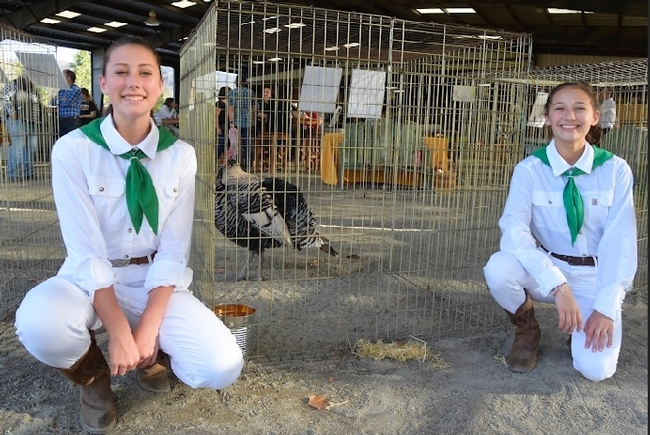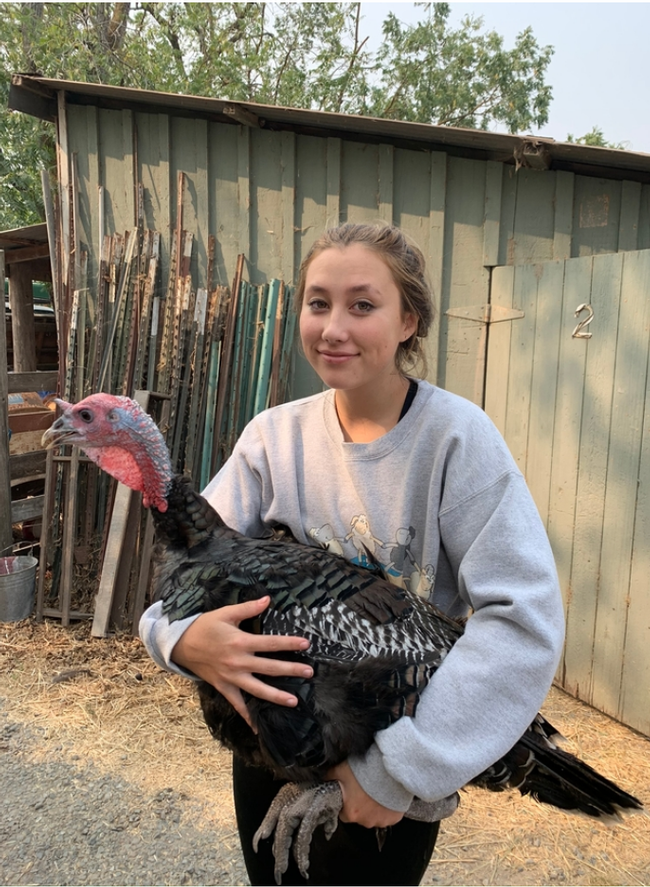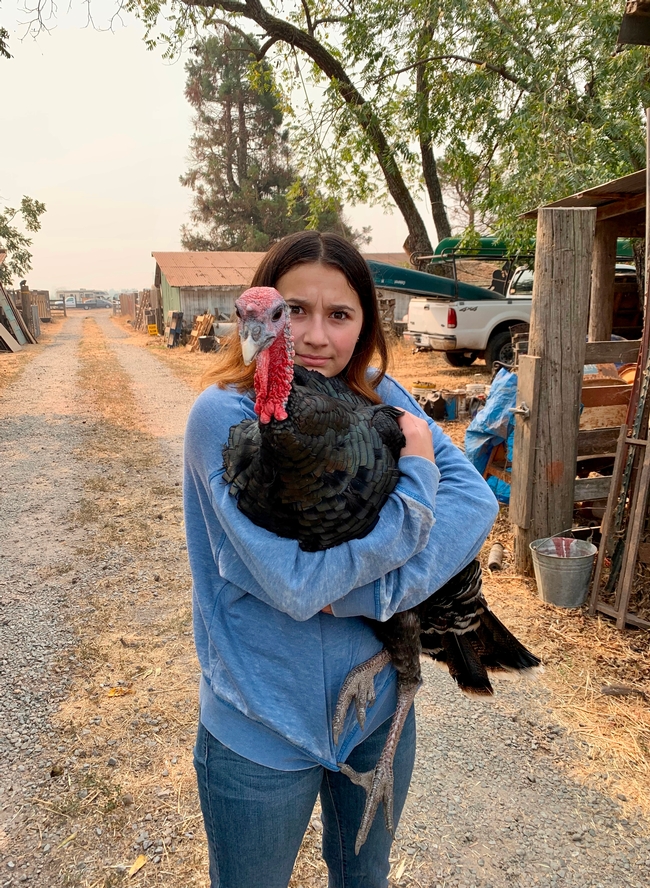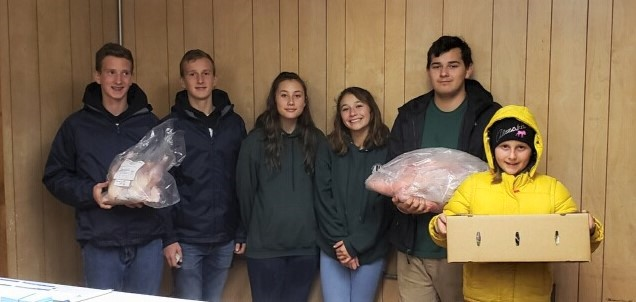While most Americans choose their Thanksgiving turkeys from the meat department at the local grocery store, Brylee Aubin and Yaxeli Saiz-Tapia can tell you the life histories of their holiday birds. The Sonoma County teenagers raise heritage turkeys together as part of a 4-H youth development project and sell them for Thanksgiving. For the last two years, Yaxeli's older brother Uli has joined the project and, between the three of them, they raised 47 turkeys this year.
The Heritage Turkey Project in Sonoma County has about 15 members of the UC Cooperative Extension's 4-H youth development program and the National FFA Organization growing more than 200 heritage turkeys this year, according to Catherine Thode, who has been leading the project for 15 years.
“Our project leaders are active breeders of heritage turkeys and some of our 4-H and FFA youth are now raising breeding pairs and hatching their own birds,” Thode said. “Each project member raises their small flock of birds on their own property and shoulders the responsibility of providing their feed and care.”
The Heritage Turkey Project promotes the preservation of heritage turkey breeds, sustainable farming and responsible animal husbandry. While raising the animals, the youths learn life skills and earn money for their work.
“The money I raise from raising and selling turkeys goes towards my college fund and to more 4-H projects like market goats or sheep,” said 15-year-old Brylee, who sells her turkeys for $9.50 per pound.
Three years ago, Brylee's neighbor, Yaxeli joined her in the heritage turkey project.
“I have learned how to care for animals, the importance of raising organic and the costs involved,” said Yaxeli, 14. “I have gained a firm understanding of how my birds are raised and processed versus corporate methods. Having the opportunity to participate in this project has strengthened my value for the importance of where my food comes from.”
Consumers benefit by getting turkeys that are farmed organically, fed high-quality grains, and never frozen, said Brylee.
“There are so many benefits to raising these beautiful birds,” said Uli Saiz-Tapia, 17. “First, you learn the cost of running a business, how to reinvest for the next year, the different stages of turkey growth and how to manage issues that arise such as the turkeys fighting, how they react to fluctuating temperatures, how to keep them safe and nourished properly. Learning about the process of getting our turkeys ready to be purchased has really benefitted my understanding of anatomy, the amount of work it takes in preparing them and the importance of not wasting food.”
The group sold out of turkeys in early November.
“Back in March, we really wondered if we should even do the project this year, not knowing what was going to happen with COVID restrictions and the impact on the economy,” Thode said. “We ended up with more project members than we've ever had, and over 200 turkeys to be sold for the Thanksgiving market.”
The 4-H members started the season with more turkeys, but lost some birds to predators. Wildfires seemed to drive more predators to the Sonoma County farms this year, she said.
“Things are fast and furious right now,” Thode said a week before Thanksgiving as the group prepared their turkeys for processing and distribution to people who placed orders. “I'm about to enter the busiest seven days of our year. It will take all weekend to have the birds processed, weighed, labeled. Then, we hunker down to sort and assign turkeys to our customer list.”
While selling turkeys, the group encourages customers to meet the farmers and to visit Livestock Conservancy to look up the history and breed characteristics of the turkey they are purchasing. In past years, some customers have taken photos of themselves with the person who raised their bird.
“We not only have a master list of customers and their desired sizes, but we create a spreadsheet for every project member with a list of the turkeys they've grown that year,” Thode said. “Each turkey is identified in the spring or early summer with a small metal wing band that lists the grower and an individual number for that turkey. When the turkey is sold, the buyer knows which project number grew their turkey, and the variety of turkey that they are purchasing. We think it's important that our customers know this. In fact, when they come to pick up their turkey, they write their check to the actual grower of their turkey.”
Visit Heritage Turkey Project to learn more about the project.



